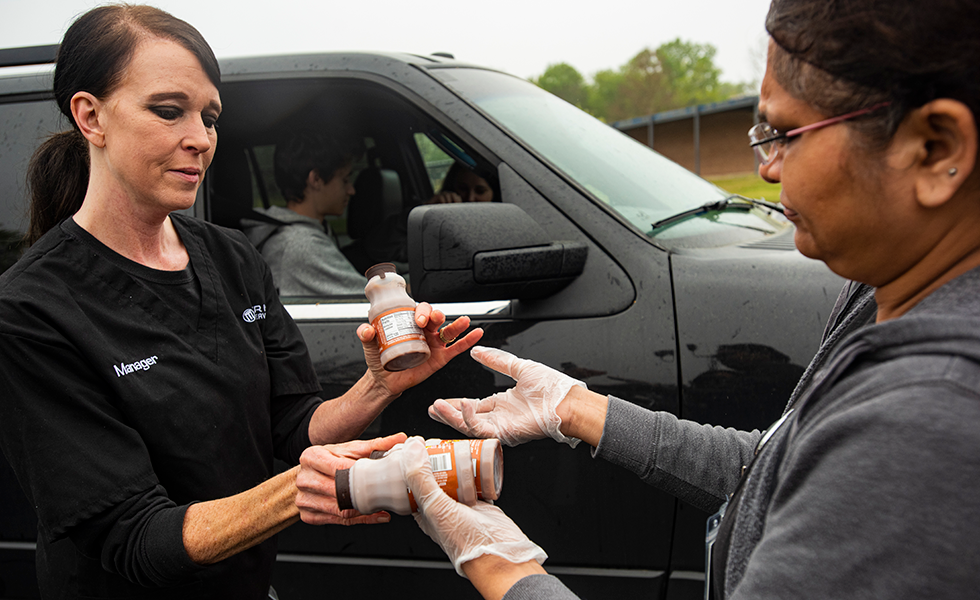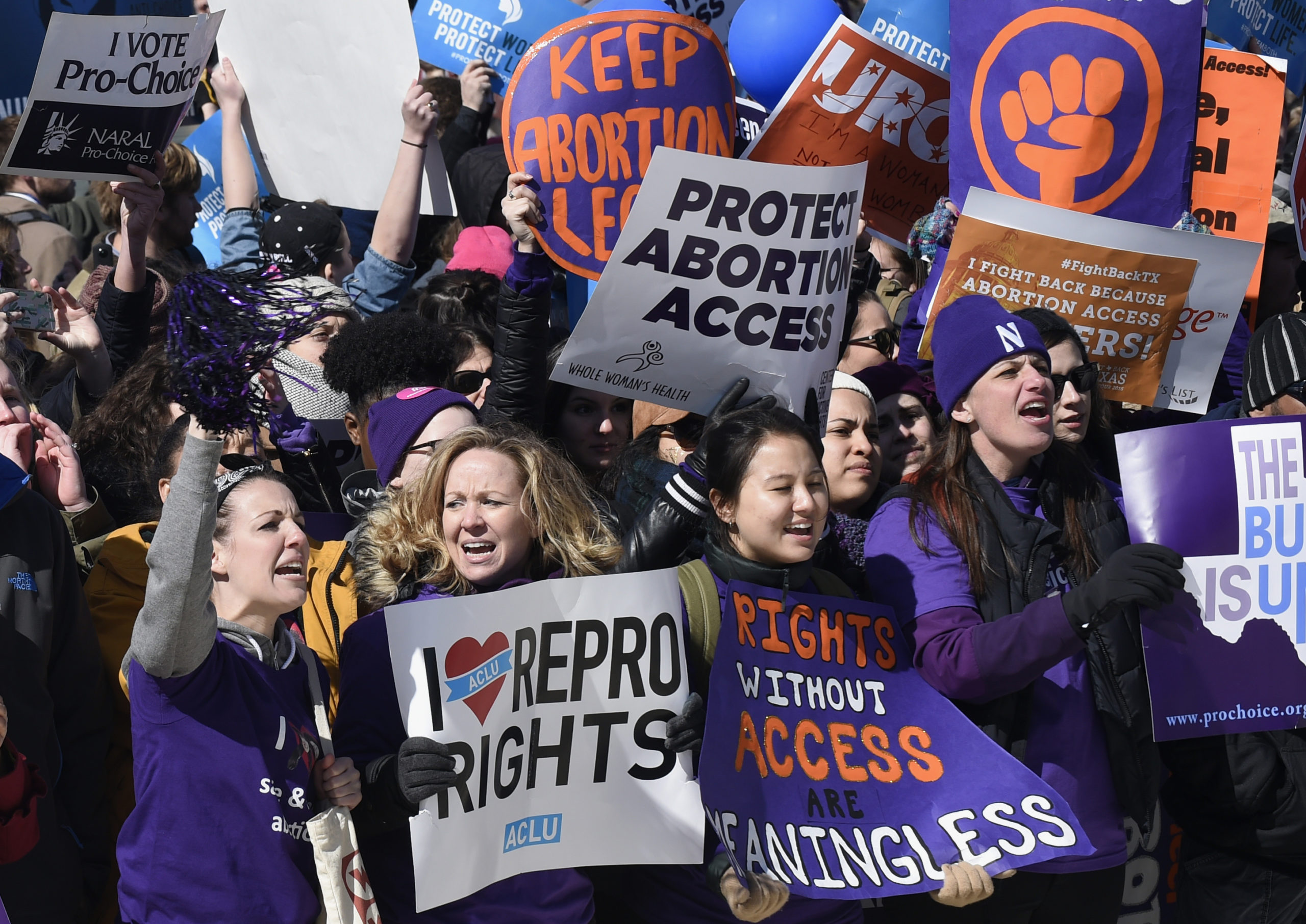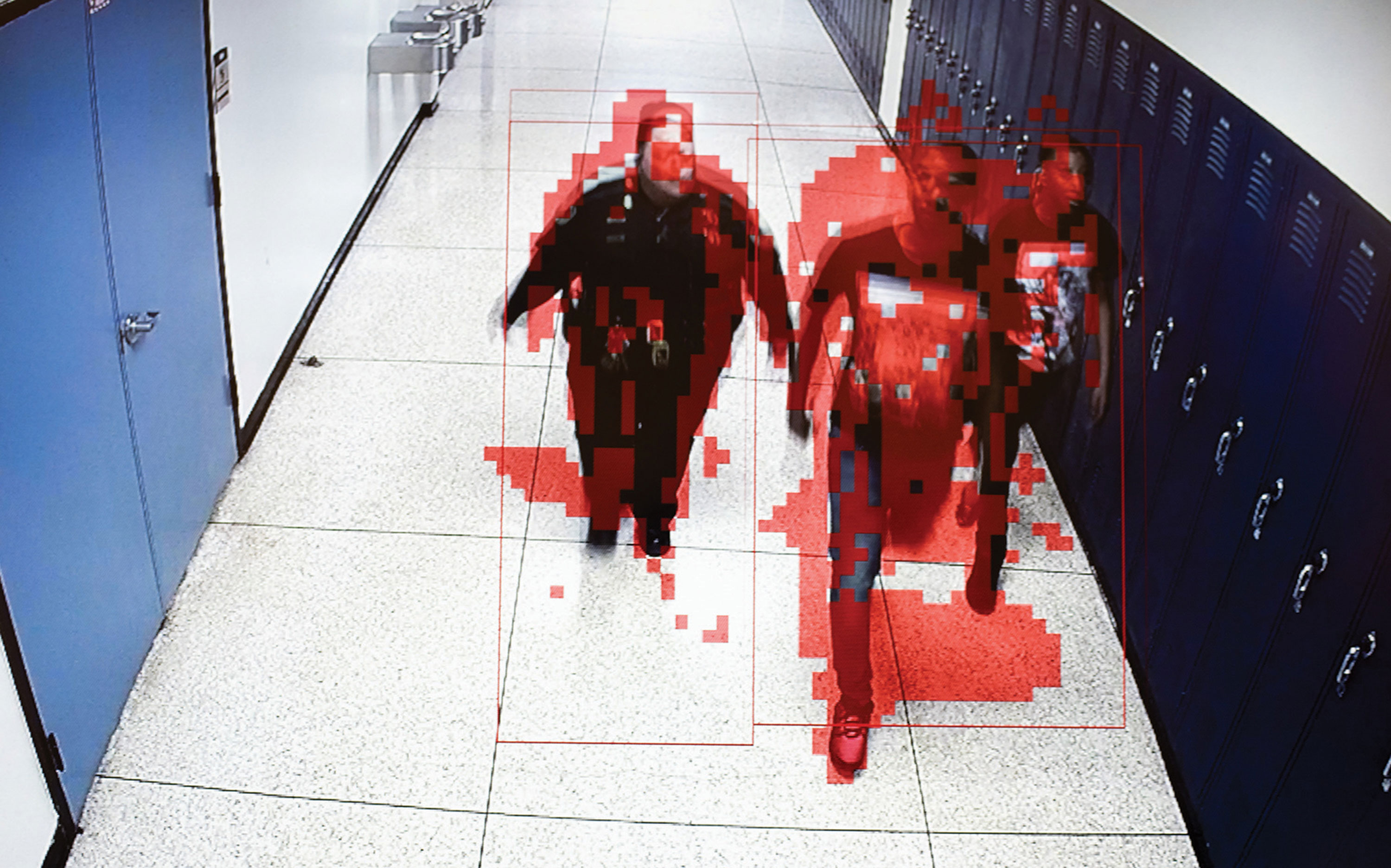
‘The Wolf is in the Henhouse’
A former Secret Service agent pledges to do whatever it takes to secure schools in Texas City ISD — and he couldn’t care less what you think.
by Justin Miller
March 25, 2019
*
When Texas City Independent School District Superintendent Rodney Cavness heard about the shooting at Santa Fe High School on the morning of May 18, he sped the 30 minutes down the road to do what he could to help.
Cavness is a gruff conservative who once promised to put President Obama’s guidelines for transgender students’ bathroom use “straight to the paper shredder.” His shaved head, broad shoulders and trimmed silver goatee give him the appearance of a retired WWE wrestler. But that dark day shook something loose in Cavness: It was time to stop hemming and hawing and get serious about securing his schools.
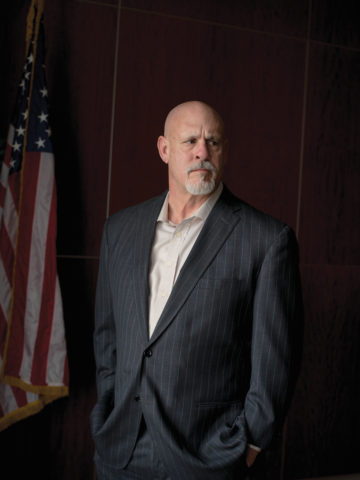
In the aftermath of shootings, school administrators have been under immense pressure from parents to do something, anything, to provide a sense of safety. That has fueled a school security boom, with the $3 billion industry selling administrators on everything from fortified doors and high-tech cameras to social media monitoring services and bulletproof backpack inserts. But as Cavness saw it, most districts weren’t getting at the heart of the matter. He wanted to forge a new path, one unconstrained by concerns of public perception or political correctness, one that would allow the district to protect students and staff just like any red-blooded Texan would protect their own family. To do that, he needed an expert with sharp elbows.
By the following Monday morning, he had hired Mike Matranga, a decorated former U.S. Secret Service agent who grew up in the area, to serve as the district’s first school security czar. Matranga had one condition: He would only answer to Cavness. What could a parent, a teacher or a principal tell him about the best way to secure schools? Tying his hands with red tape would be like “putting 87 octane fuel in a Ferrari,” Matranga said. “It’s not gonna perform the way that it should.”
Almost one year into the experiment, Cavness still has no qualms about his security director. “He answers to me and I don’t question him,” Cavness said recently. The best approach was to just “turn him loose,” giving the high-level security operative the discretion to spend $6.5 million that voters had recently earmarked for district security upgrades as he saw fit.
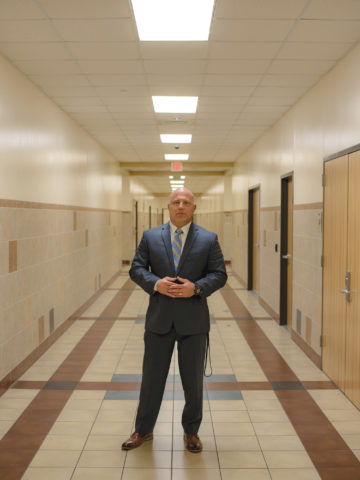
With Cavness and a supportive school board’s blessing, Matranga has taken things further than in any other Texas school district — using surveillance technology to try to root out threats before they happen, hardening buildings to make it more difficult for a shooter to get in and putting more “boots on the ground” in the event that an attacker does penetrate a school.
At his direction, the 9,000-student district has already spent more than $5 million on a facial recognition camera surveillance system; AR-15s; real-time student tracking devices; eight additional Galveston County sheriff’s deputies (for a total of 19), who work as school liaison officers; and state-of-the art hardware to secure entryways and automatically lock classroom doors.
Texas City ISD is putting forth a distinctly aggressive model of school security, one that has drawn national attention on Fox News, in The Wall Street Journal and even on Dana Loesch’s NRATV. Now, zealous state lawmakers are pointing to this Gulf Coast district as a potential model on which to base statewide school safety policy. But how far should we go to secure schools from the threat of a mass shooting? Much of the national focus on the school shooting epidemic has centered on the need for gun control. But in Texas City, school security begins with the fatalistic assumption that guns will always be readily available to those who want them.
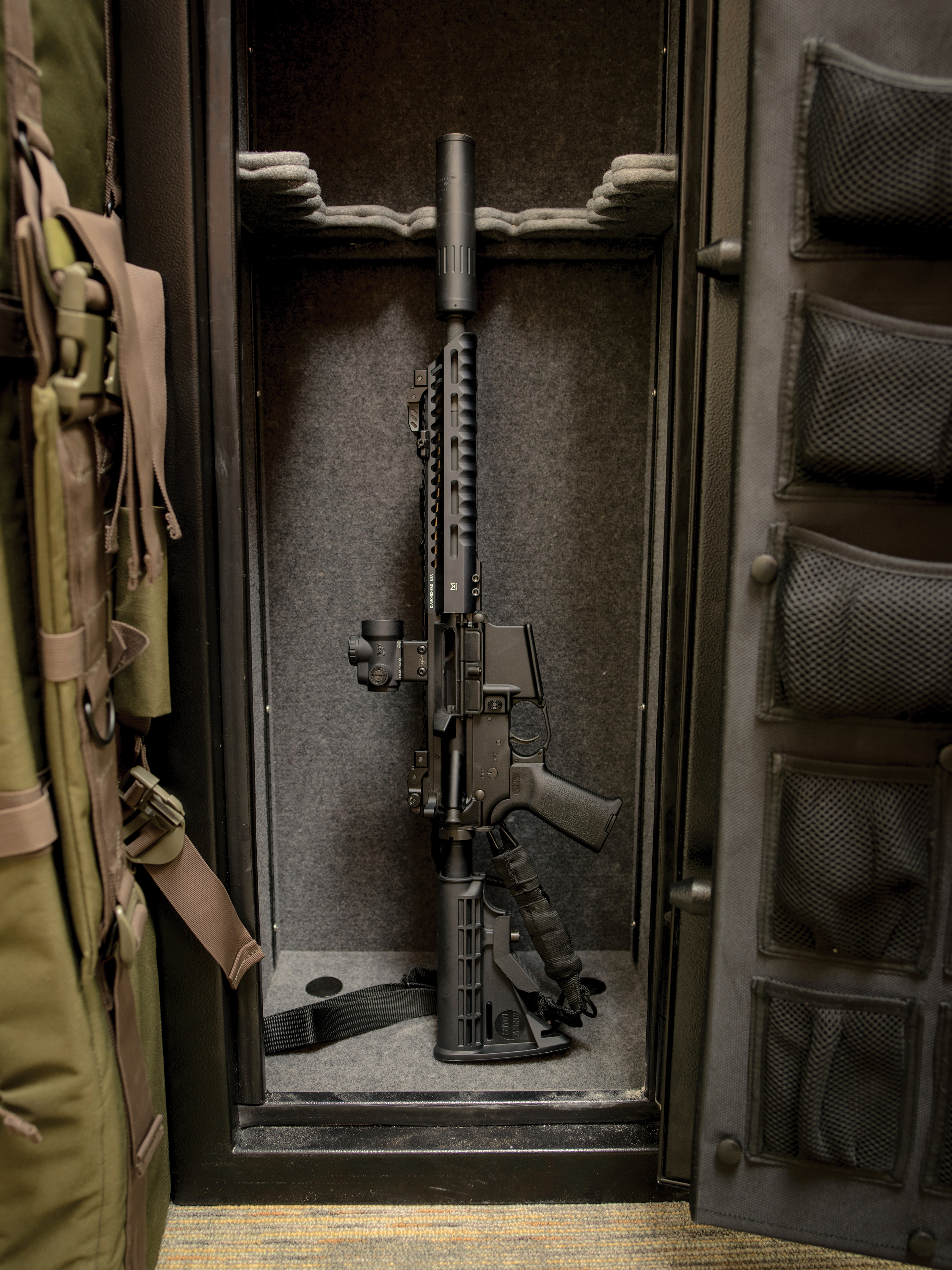
“How do you keep the bad guys from getting guns? They’re out there. They just are. Whether people like it or not, that’s just how it is,” Cavness told me. Texas City ISD officials don’t see the Second Amendment as the problem. The real problem lies with social media, which has enabled a reckless youth culture and moral decay. Matranga is concerned that today’s young students have eschewed the 9/11-era mentality of “See something, say something,” letting potential warning signs go unreported. Meanwhile, he thinks the federal government and the PC police make it nearly impossible to properly discipline potentially dangerous students who he believes are “a ticking time bomb.”
“We talk about securing buildings from outside, and that’s important. Let me ask you, when’s the last time we’ve had an unknown armed intruder in a school?” Matranga said at a recent Texas Senate hearing on school safety. “Well, the wolf is in the henhouse. We’ve got to identify the wolf.”
*
Matranga’s office, housed in a small administration building, is sparse. One wall bears a whiteboard with a list of security objectives; another hosts a 70-inch touchscreen TV. A copy of the Constitution sits on his desk. It’s hard to miss the large steel gun safe along the back wall behind him. Inside are several AR-15s fitted with digital sights, silencers and shoulder straps. Matranga says he had a “moral and ethical obligation” to buy 22 of the semi-automatic rifles so that school police officers could access them in the event of a shooting.
Predictably, there’s a perception that heavily armed guards are patrolling the halls. “Everybody thinks that we’re just some frickin’ cowboys out here carrying AR-15s. That’s not how this works,” Matranga lamented. The guns are only to be used as a matter of last resort by the sheriff’s deputies if a shooter breaches a school building. Matranga has dedicated far more resources to, as he put it, identifying the wolves. To do so, he’s obtained a degree of surveillance power that rivals that of an intelligence agency in a former Soviet bloc nation.
“I don’t see color: I see good behavior, I see bad behavior.”
Matranga points to a report by the Secret Service’s National Threat Assessment Center that found that 93 percent of school shooters exhibited “concerning behavior” and that attacks could have been avoided with proper surveillance and open communication tools.
Texas City students and parents can anonymously provide tips about concerning behavior through a reporting system called P3. Each of the 12 schools in the district has a team of administrators, teachers and other staff trained in a “threat assessment” protocol to analyze risks and determine how to move forward.

Matranga also employs a technology director who gathers intelligence from students’ public social media posts. While most districts that monitor social media use algorithm-based software that searches platforms such as Facebook, Instagram and Snapchat for keywords, Matranga doesn’t think that’s sufficient. He’s in conversation with what he calls a “military-style contracting firm” that uses intelligence analysts to scrape the entire Internet, including dark-web message boards. “They found stuff on me that I didn’t know existed,” he said.
Matranga has also spent $3.7 million updating the district’s surveillance camera system, doubling the total number of cameras to about 1,400 and implementing sophisticated facial recognition software that can flag suspicious people and track an individual’s movements. He and his team recently got the system up and running at La Marque High School, and he showed me how the software uses artificial intelligence to teach itself individual students’ faces. “Anything that we can use that’s going to benefit us and provide a faster response to save our kids’ lives, we’re going to do that,” Matranga said.
However, the use of facial recognition software in schools has drawn significant backlash. It’s often prone to inaccuracy and sabotage, and there is no evidence that facial recognition is effective at stopping school shootings. The ACLU has warned that surveillance technologies in schools often end up disproportionately targeting students of color and exacerbating the school-to-prison pipeline.
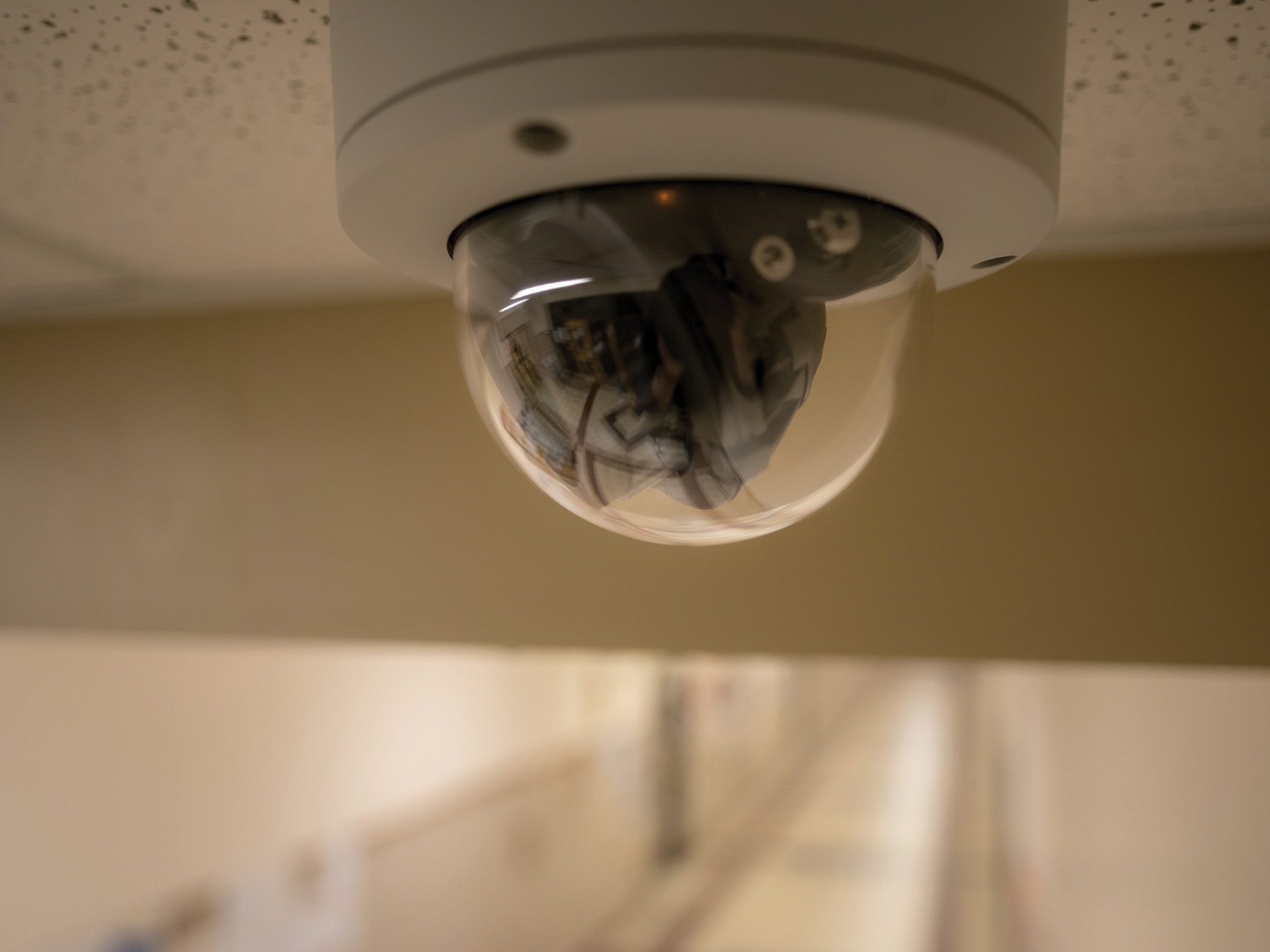
Seventy percent of the students in Texas City ISD are black or Hispanic. The district also suspends, expels and puts students in alternative education at rates that exceed the state average, according to Texas Appleseed, a civil rights advocacy group that tracks school discipline data.
But Matranga isn’t concerned about whether his security apparatus offends people. “I’m not going to worry about political correctness or anybody’s feelings,” he said.
Is his system immune to implicit racial bias? “I don’t worry about that at all because I don’t see color,” he said. “I see good behavior, I see bad behavior.” He called the school-to-prison pipeline “a bullshit liberal philosophy.”
*
Has Texas City’s hard-nosed approach brought it any closer to preventing a school shooting? That’s an inherently difficult question. Cavness doesn’t want to wait until there’s a gun in one of his schools to figure out whether his program is effective. So the district has taken a harsh approach when it comes to handling potential threats: Anyone who makes a threat will be made an example of.
In September, a 16-year-old high schooler scrawled an alarming message on a bathroom wall that district officials described as a serious threat to shoot up Texas City High School on a specific date. Matranga used handwriting analysis, scoured social media and interviewed classmates to identify the student, who was promptly arrested and charged. “We will punish this kid as severely as we can,” Cavness declared at the time. “Should it happen again, we’ll punish just as harshly as we will this time. We are not playing around.”
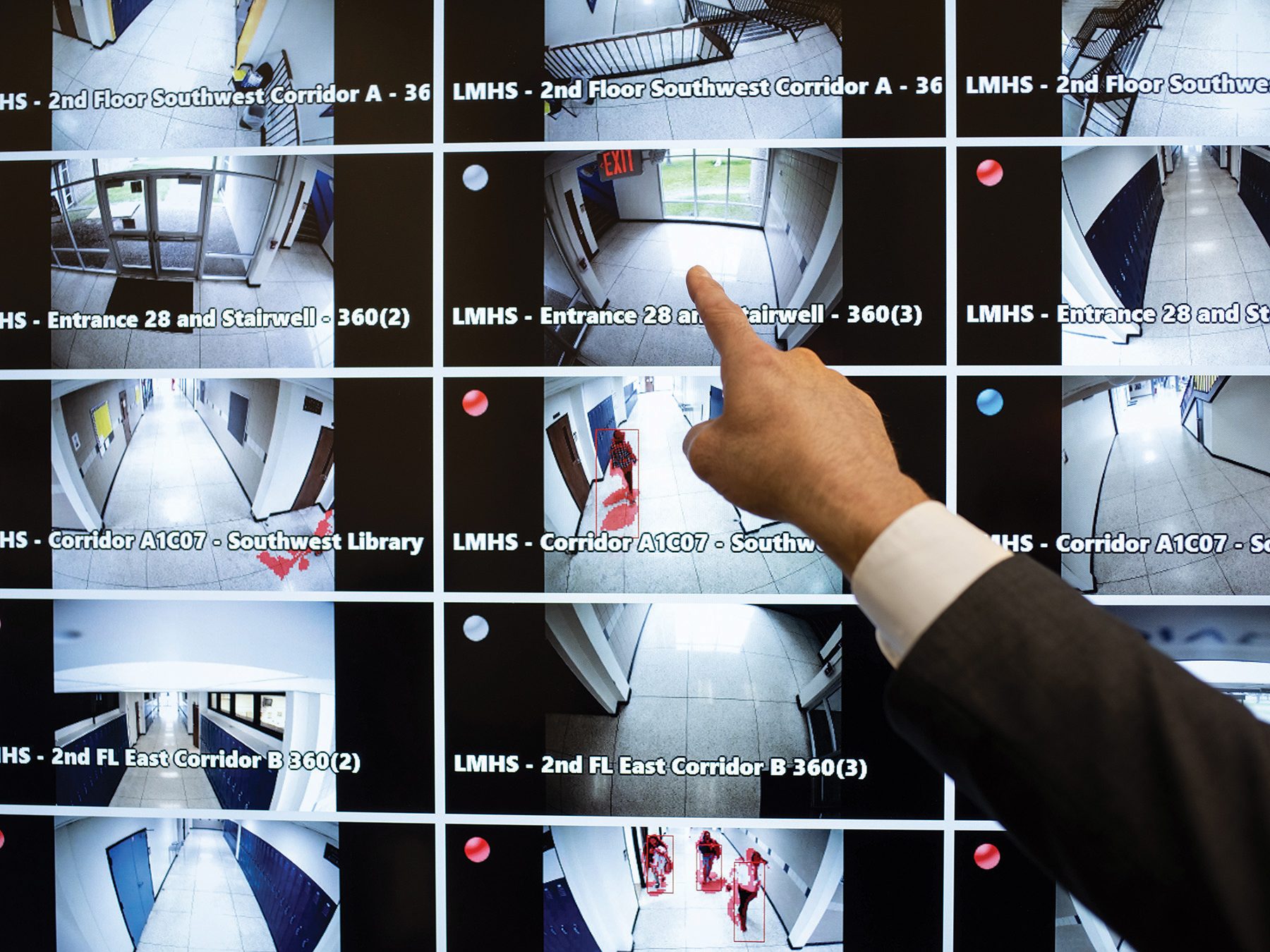
The district sees the response to the incident as an example of the system working as intended, preventing a potentially serious act of violence. The student, who has a behavioral disorder, was charged with a state felony and given the maximum 180 days in a disciplinary alternative education program. The district claims that the number of threats has since decreased.
But juvenile justice advocates worry that a reactionary school security panic will create a zero-tolerance culture that further criminalizes kids’ behavior.
“When you’re resorting to a lot of hardening methods and law enforcement-focused methods, your school climate is going to suffer and there will be a ripple effect on student outcomes,” said Deborah Fowler, the executive director of Texas Appleseed.
Texas City officials believe otherwise. The “good idea fairies,” as Matranga calls his critics, want to “talk about unicorns” and “hug kids” instead of making them face consequences. “Anybody who argues with me on that is full of shit,” he said.
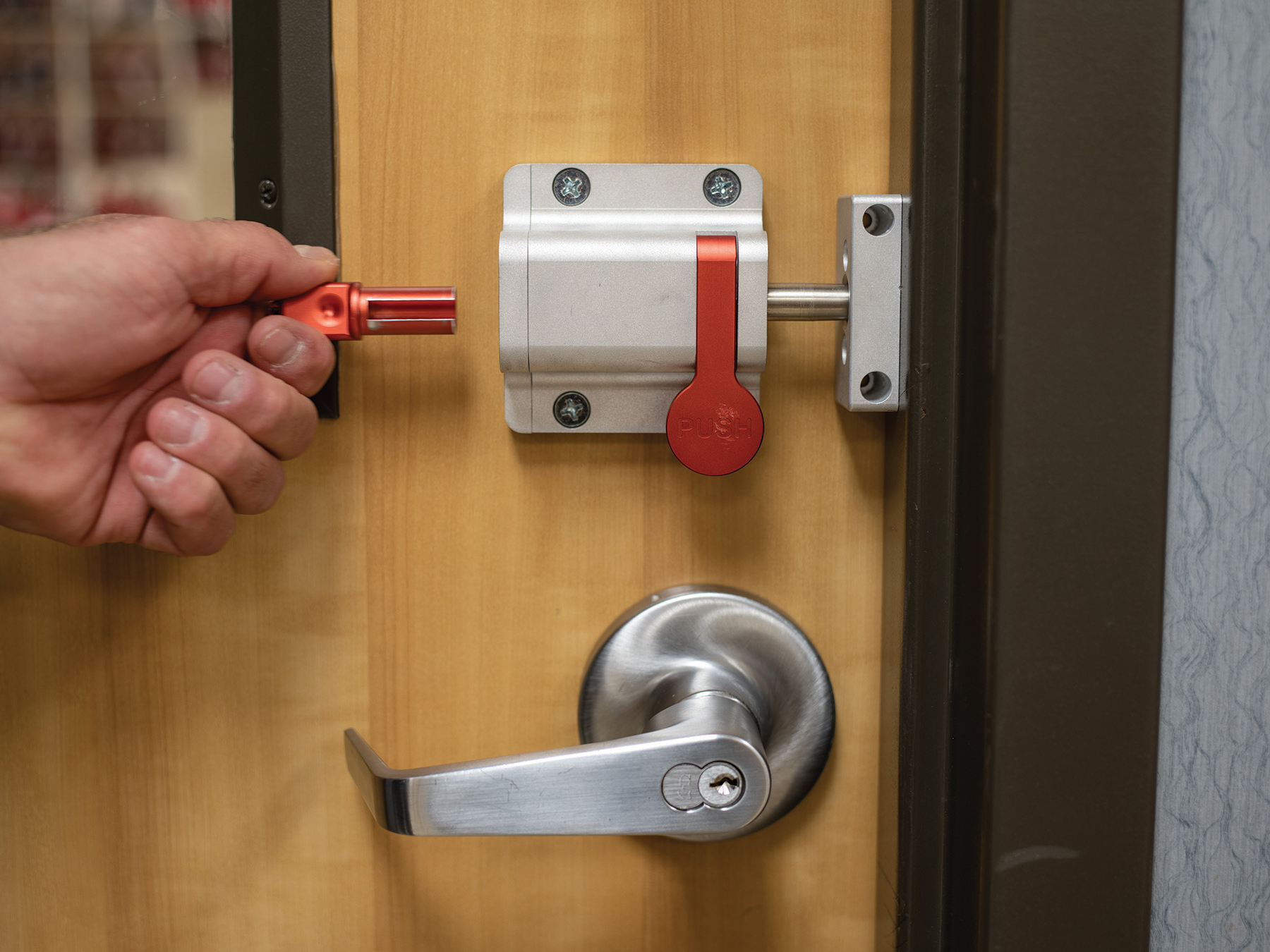
If a kid runs afoul of the law in school, they need to be arrested just like they would in the “real world,” Matranga says. Late last year, a 12-year-old seventh-grader who had just moved to the district allegedly wrote on a bathroom wall that she was going to kill everyone in the school. While Matranga didn’t see it as a credible threat, she was nonetheless arrested. The district attorney was considering charging her with a felony until Matranga urged him to drop it down to a misdemeanor.
“I don’t want to arrest kids either, but if the kid is making a credible threat and it’s broken the law, we have a duty to protect everybody else,” Matranga said. He estimates that more than two-thirds of reported threats are resolved by administrators or counselors, not the police.
*
As the Texas Legislature considers how to improve school security throughout the state, Republican lawmakers like Senate Public Education Committee Chair Larry Taylor, whose district includes Santa Fe and Texas City, have held up Texas City ISD as the model of success. But during committee testimony in March, Matranga’s brash attitude showed that perhaps Secret Service expertise doesn’t always transfer over to an environment that prioritizes education.
Matranga told senators that federal laws and guidelines protecting students with disabilities are “absolutely crippling” to the public school system. He claimed that students who are a “ticking time bomb” can’t be properly disciplined because people “have learned to game the system as a protection for their kid who maybe just can’t behave or can’t be told no.”
The eight additional deputies cost about $750,000 per year, which Cavness estimates could pay for at least seven experienced teachers.
Tiffany Williams of the Coalition of Texans with Disabilities was disturbed. After his testimony, she followed Matranga out of the hearing room and confronted him in the hall. She tried to gently explain that his understanding of federal disability law was wildly inaccurate. His testimony, Williams told Matranga, showed that he didn’t fully appreciate how his school security policies could unfairly target vulnerable students. Matranga was conciliatory, they exchanged business cards and he promised to follow up.
When I spoke with him a couple weeks later, Matranga made clear that he was not chastened — “Everything I’m saying is true” — but that he’s open to any new ideas that could help.
*
Texas City’s goal of becoming the “gold standard” in school security isn’t cheap. The eight additional deputies that were brought on cost about $750,000 per year, which Cavness estimates could pay for at least seven experienced teachers.
The district currently has three licensed school psychologists for 9,000 students, about four times less than the one per 700 students that the National Association of School Psychologists recommends. And for all his tough talk, Matranga insisted to me that he “would be willing to give up every single bit of security hardware we have if we had a clinical psychologist on every campus.”
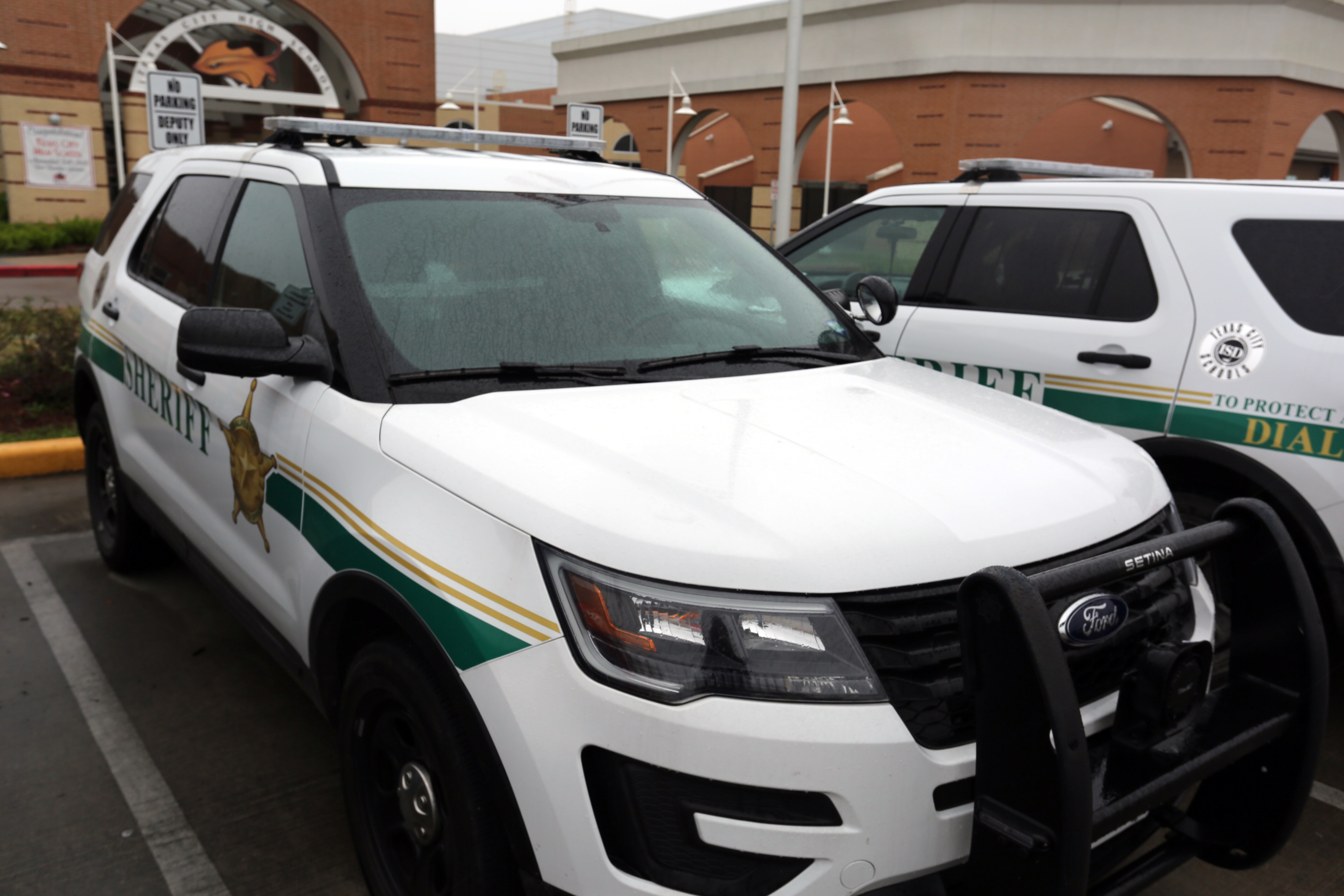
As Matranga was showing me the various security features he’s installed in Texas City High School, we stepped into a classroom. A teacher had some questions about the new manual locking devices on every classroom door. Matranga asked a group of journalism students if they feel like they’re in a prison. Their response: not really, though it’s weird to know they’re being watched all the time. Do they feel safer? Most shrugged. If anything, all the new security measures make it feel like an attack is imminent, one student said.
Indeed, it seems as though there’s always a potential threat looming over Texas City ISD, much like the ever-present smell of hydrogen sulfide that clings to the air in this coastal petrochemical hub. During my two days in town, Matranga seemed like he was constantly dealing with one possible crisis after another.
Even with all the new bells and whistles, Matranga knows the system is far from failsafe. His worst fear is a student inadvertently letting someone with bad intentions in through an unprotected side door. Still, he believes the district has responded to the threat of school shootings in the most effective way possible, in large part because he doesn’t care what anyone thinks. Allegations of overkill? “No, I’m not concerned about that one bit. You can put that in bold print,” Cavness said. “I mean, I gotta look at myself in the mirror every day and say, ‘Are we doing the best for our kids?’ And I have to tell myself that we are.”
Top photo caption: Students at Texas City High School appear on the district’s motion sensor system and facial recognition software.
READ MORE:
-
Tough Love and Discipline in Brownsville ISD’s Boot Camp School: When Brownsville public school students step out of line, they’re marched off to boot camp. But does military-style discipline help or harm?
-
‘Do Something with This Grief’: Mom of Santa Fe Shooting Victim Turns to Politics: Rhonda Hart, a gun reform advocate whose daughter was killed in the Santa Fe High School shooting last May, is running for school board in her bright red Texas district.
-
The $9 Billion School Finance Problem in Speaker Bonnen’s Backyard
: While legislators focused on school finance and property taxes, a silent culprit continued to metastasize. If Chapter 313, a corporate welfare program, is left unaddressed, it could undermine any progress made this session, critics warn. -
Texas Teachers Take on Dan Patrick and the Legislature over Dismal Education Funding
: After years of cuts and attacks, educators are on the offensive this legislative session. But will lawmakers do enough, and what will teachers do if they don’t?

